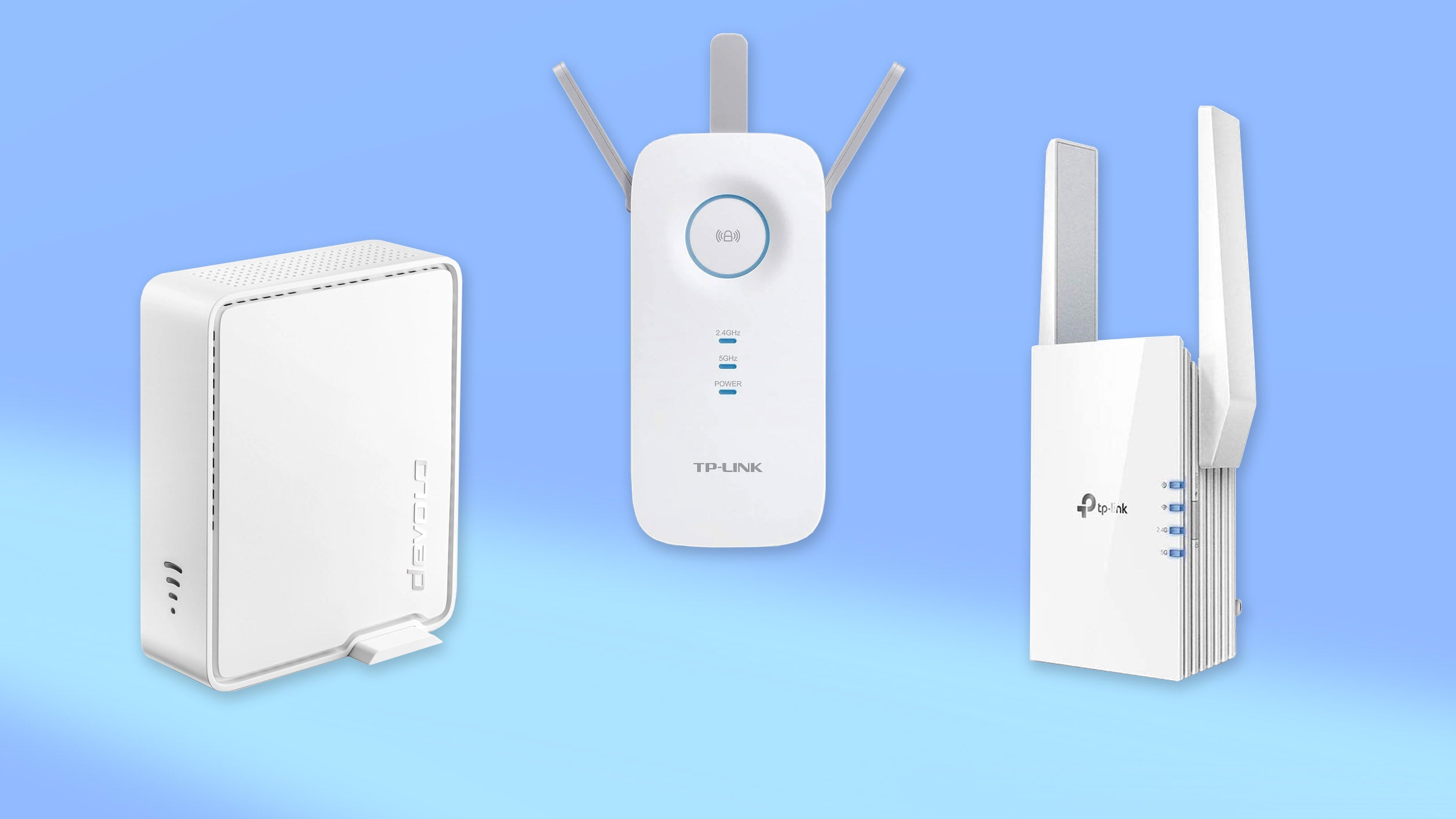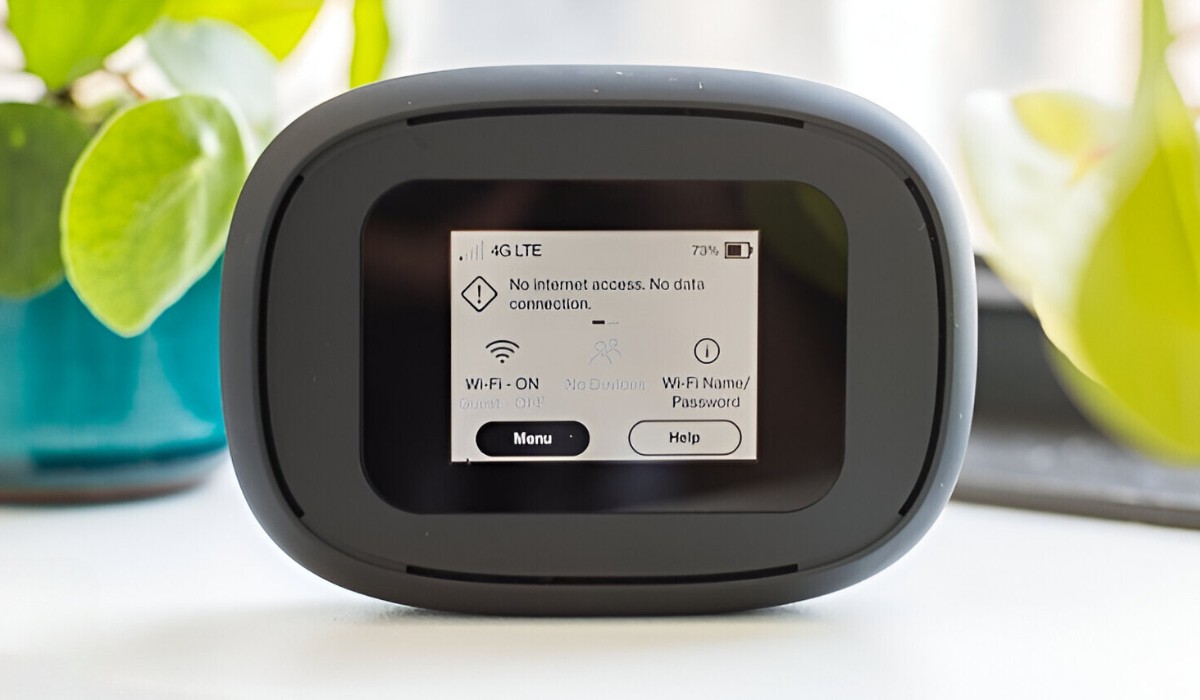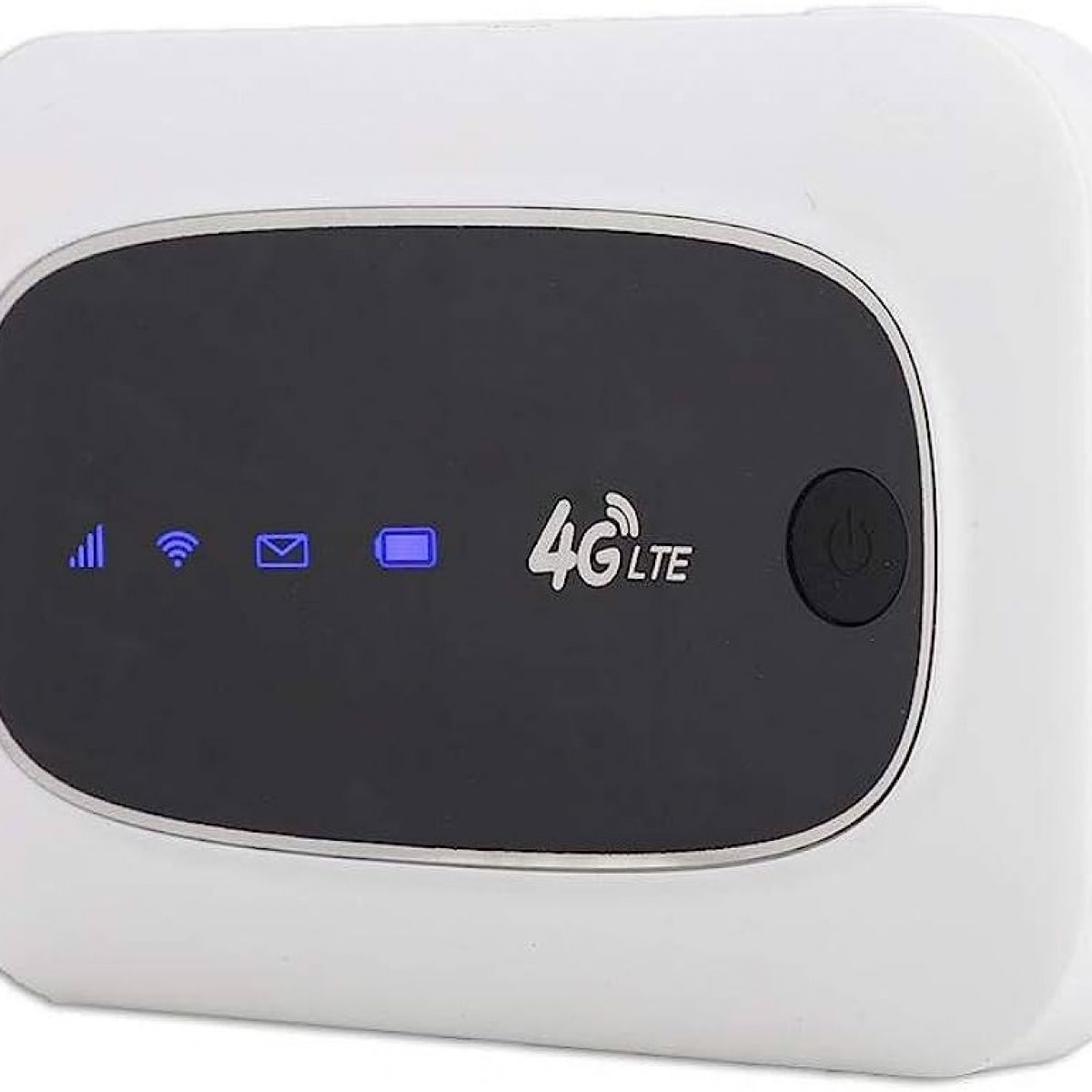Introduction
In today's fast-paced digital world, a strong and reliable Wi-Fi connection is essential for both work and leisure. However, it's not uncommon to encounter dead zones or weak signals in certain areas of your home or office, which can be frustrating. This is where a Wi-Fi extender comes to the rescue, offering a simple and effective solution to enhance and extend your Wi-Fi coverage.
Whether you're working from home, streaming your favorite shows, or simply browsing the web, a Wi-Fi extender can significantly improve your overall online experience. By amplifying your existing Wi-Fi signal and rebroadcasting it to areas with poor coverage, a Wi-Fi extender effectively expands the reach of your wireless network, providing a seamless and uninterrupted connection throughout your space.
In this comprehensive guide, we'll delve into the world of Wi-Fi extenders, exploring how these devices work, the factors to consider when choosing the right extender for your needs, and a step-by-step setup process to ensure a smooth and hassle-free installation. Additionally, we'll discuss how to connect your devices to the extended network and provide troubleshooting tips to address common issues that may arise.
By the end of this guide, you'll have a clear understanding of how to maximize your Wi-Fi coverage using a Wi-Fi extender, empowering you to enjoy a strong and reliable connection in every corner of your home or office. Let's embark on this journey to extend and optimize your Wi-Fi network for a seamless online experience.
Understanding Wi-Fi Extenders
Wi-Fi extenders, also known as wireless repeaters or boosters, are ingenious devices designed to amplify and extend the reach of an existing Wi-Fi network. They act as intermediaries between your wireless router and areas with poor or no Wi-Fi coverage, effectively bridging the gap to provide a stronger and more expansive wireless signal.
At their core, Wi-Fi extenders work by receiving the existing Wi-Fi signal from your router and then rebroadcasting it, effectively extending the coverage area. This process helps eliminate dead zones and ensures a more consistent and reliable connection throughout your home or office space. By strategically placing Wi-Fi extenders in areas where the signal strength is weak, you can effectively amplify the signal and enhance the overall coverage, providing seamless connectivity across your entire environment.
These devices are particularly beneficial for larger homes, multi-story buildings, or spaces with architectural elements that can obstruct or weaken Wi-Fi signals. By leveraging Wi-Fi extenders, you can overcome these challenges and enjoy uninterrupted connectivity in every room, allowing you to work, stream, and browse without the frustration of signal dropouts or slow speeds.
When considering Wi-Fi extenders, it's important to understand that while they can enhance coverage, they do not increase the overall speed of your internet connection. Instead, they focus on extending the reach of your existing signal, ensuring that devices in remote areas receive a strong and stable connection.
In essence, Wi-Fi extenders serve as invaluable tools for optimizing and extending your wireless network, offering a practical solution to address coverage gaps and signal weaknesses. With a clear understanding of how these devices operate, you can make informed decisions when selecting and setting up a Wi-Fi extender to maximize your Wi-Fi coverage and enjoy a seamless online experience.
Choosing the Right Wi-Fi Extender
When it comes to choosing the right Wi-Fi extender, several factors must be considered to ensure optimal performance and compatibility with your existing network. With a myriad of options available in the market, selecting the most suitable extender can seem daunting. However, by focusing on key considerations, you can streamline the selection process and make an informed decision that aligns with your specific requirements.
Coverage Area and Range
The first and foremost aspect to evaluate is the coverage area and range of the Wi-Fi extender. Understanding the size and layout of the space where you intend to extend the Wi-Fi signal is crucial. Larger homes or offices may require a high-powered extender with an extended range to effectively cover expansive areas, while smaller spaces may benefit from a more compact extender with a shorter range.
Compatibility with Router and Wi-Fi Standards
Compatibility with your existing router and Wi-Fi standards is paramount. Ensure that the Wi-Fi extender supports the same Wi-Fi standards (such as 802.11ac or 802.11n) as your router to guarantee seamless integration and optimal performance. Additionally, compatibility with dual-band or tri-band routers should be considered, especially if your network operates on multiple frequencies.
Speed and Performance
Assess the speed capabilities and performance features of the Wi-Fi extender. Look for extenders that support high-speed connections, such as those equipped with Gigabit Ethernet ports or advanced technologies like MU-MIMO (Multi-User, Multiple Input, Multiple Output) for improved data transfer efficiency. This ensures that the extended network delivers fast and reliable connectivity for all your devices.
Ease of Setup and Management
Opt for a Wi-Fi extender that offers a user-friendly setup process and intuitive management interface. Features such as one-touch setup, mobile app integration, or browser-based configuration can simplify the installation and customization of the extender, making it accessible to users with varying technical expertise.
Additional Features and Flexibility
Consider any additional features that may enhance the extender's functionality, such as signal strength indicators, adjustable antennas, or the ability to function as an access point. Flexibility in deployment and customization can significantly impact the extender's effectiveness in addressing specific coverage challenges and optimizing the extended network.
By carefully evaluating these factors and conducting thorough research on available Wi-Fi extender models, you can make a well-informed decision that aligns with your specific coverage needs and network requirements. Selecting the right Wi-Fi extender sets the stage for a successful setup and ensures that you can maximize the potential of your extended wireless network, providing a robust and reliable connection across your entire environment.
Setting Up Your Wi-Fi Extender
Setting up your Wi-Fi extender is a straightforward process that can significantly enhance your wireless network coverage. By following these step-by-step instructions, you can seamlessly integrate the extender into your existing network, ensuring a strong and reliable Wi-Fi signal throughout your home or office.
-
Choose an Optimal Location: Identify an area within the range of your existing Wi-Fi network where the signal is strong enough to ensure reliable communication with the router while also covering the areas with weak or no signal. This strategic placement is crucial to the effectiveness of the extender.
-
Power Up the Extender: Plug the Wi-Fi extender into a power outlet in the vicinity of your router. Ensure that the extender is powered on and ready for configuration. Most extenders have indicator lights that provide status information during the setup process.
-
Connect to the Extender: Using a Wi-Fi-enabled device such as a smartphone or laptop, locate the network name (SSID) of the extender in the list of available Wi-Fi networks. Connect to this network using the default password provided in the extender's documentation.
-
Access the Configuration Interface: Once connected to the extender's network, open a web browser and enter the default IP address of the extender in the address bar. This will lead you to the extender's configuration interface, where you can proceed with the setup process.
-
Follow the Setup Wizard: Many Wi-Fi extenders feature a setup wizard that guides you through the configuration steps. This typically involves selecting the existing Wi-Fi network you want to extend, entering the network password, and customizing the extended network settings, such as the SSID and password for the extended network.
-
Complete the Configuration: After entering the necessary details, follow the prompts to finalize the configuration. The extender may restart as part of the setup process. Once the configuration is complete, the extender will be ready to amplify and rebroadcast the existing Wi-Fi signal.
-
Placement Optimization: After the initial setup, assess the signal strength and coverage provided by the extender. If necessary, adjust the extender's placement to optimize coverage in areas that previously had weak or no signal.
By following these steps, you can successfully set up your Wi-Fi extender and extend the reach of your wireless network. This process empowers you to overcome coverage limitations and ensures a seamless and uninterrupted Wi-Fi experience across your entire environment.
Connecting Your Devices
Once your Wi-Fi extender is successfully set up and operational, the next crucial step is to connect your devices to the extended network. This process ensures that all your smartphones, laptops, smart TVs, and other Wi-Fi-enabled devices can seamlessly access the amplified Wi-Fi signal, allowing you to enjoy uninterrupted connectivity throughout your space.
To connect your devices to the extended network, follow these simple steps:
-
Locate the Extended Network: Using your device's Wi-Fi settings, scan for available networks and identify the newly created extended network. This network will typically have a different name (SSID) from your primary Wi-Fi network, often with a suffix or indicator to differentiate it as the extended network.
-
Enter the Network Password: Once you've located the extended network, select it and enter the network password. This password is typically the same one you configured during the setup of the Wi-Fi extender. If you customized the extended network settings, ensure that the password matches the one you specified during the configuration process.
-
Establish Connection: After entering the correct password, your device will establish a connection to the extended network. Once connected, you should see an indication of the network signal strength, confirming that your device is now utilizing the extended Wi-Fi coverage provided by the extender.
-
Verify Connectivity: To ensure a successful connection, test the connectivity of your device by accessing websites, streaming content, or performing any online activities that require internet access. Verify that the connection is stable and that you can seamlessly browse the web and utilize online services without encountering connectivity issues.
-
Repeat for All Devices: Repeat the above steps for each Wi-Fi-enabled device you wish to connect to the extended network. This ensures that all your devices benefit from the amplified Wi-Fi signal, providing a consistent and reliable connection across your entire environment.
By following these steps, you can effortlessly connect your devices to the extended Wi-Fi network, optimizing their access to the amplified signal provided by the Wi-Fi extender. This seamless connectivity empowers you to enjoy a robust and reliable internet connection on all your devices, eliminating the frustration of dead zones and weak signal areas within your home or office.
Troubleshooting and Tips
Even with a carefully executed setup, issues may occasionally arise when using a Wi-Fi extender. Understanding common troubleshooting techniques and implementing practical tips can help address these challenges and optimize the performance of your extended Wi-Fi network. Here are some valuable troubleshooting strategies and tips to consider:
Signal Interference and Placement Optimization
Signal interference from other electronic devices or physical obstructions can impact the effectiveness of your Wi-Fi extender. To mitigate this, ensure that the extender is placed away from potential sources of interference, such as cordless phones, microwave ovens, or Bluetooth devices. Additionally, optimizing the placement of the extender based on signal strength indicators and conducting periodic assessments can help fine-tune the coverage and minimize signal disruptions.
Firmware Updates
Regularly check for firmware updates for your Wi-Fi extender. Manufacturers often release firmware updates to address performance issues, enhance compatibility with new devices, and introduce new features. By keeping your extender's firmware up to date, you can ensure optimal functionality and address any known issues that may affect its performance.
Network Congestion and Band Steering
In environments with multiple Wi-Fi networks or a high density of connected devices, network congestion can impact the performance of your extended network. Some Wi-Fi extenders offer band steering capabilities, allowing them to intelligently distribute connected devices between the 2.4GHz and 5GHz bands for improved efficiency. Enabling band steering on your extender can help alleviate network congestion and optimize the utilization of available bandwidth.
Security and Password Management
Maintaining robust security measures for your extended Wi-Fi network is essential. Regularly update the network password and consider implementing additional security features, such as MAC address filtering or guest network isolation, to safeguard against unauthorized access. Additionally, ensure that the extender's administrative interface is protected with a strong password to prevent unauthorized configuration changes.
Range Extender Mode vs. Access Point Mode
Depending on your specific network requirements, you may need to determine whether to configure the extender in Range Extender Mode or Access Point Mode. Range Extender Mode amplifies the existing Wi-Fi signal, while Access Point Mode creates a new Wi-Fi hotspot using a wired Ethernet connection. Understanding the distinct functionalities of each mode and selecting the appropriate configuration based on your network setup is crucial for optimizing the extender's performance.
By implementing these troubleshooting strategies and tips, you can proactively address potential issues and fine-tune the operation of your Wi-Fi extender, ensuring a robust and reliable extended Wi-Fi network. These proactive measures empower you to overcome common challenges and optimize the performance of your extended network, ultimately enhancing your online experience across your entire environment.
Conclusion
In conclusion, a Wi-Fi extender serves as a valuable ally in the quest for seamless and reliable internet connectivity throughout your home or office. By understanding the principles of Wi-Fi extension, carefully selecting the right extender, and following a systematic setup process, you can effectively overcome coverage limitations and ensure a robust Wi-Fi signal in every corner of your environment.
The journey begins with acknowledging the pivotal role of Wi-Fi extenders in amplifying and rebroadcasting existing signals, thereby eliminating dead zones and weak signal areas. This understanding empowers individuals to make informed decisions when selecting an extender, taking into account factors such as coverage area, compatibility, speed, and ease of setup. By carefully evaluating these considerations, users can align the extender's capabilities with their specific coverage needs, setting the stage for a successful extension of their wireless network.
The setup process, though straightforward, plays a critical role in ensuring the optimal performance of the Wi-Fi extender. Strategic placement, seamless integration with the existing network, and customization of extended network settings are key components of this process. By following the step-by-step setup guide, individuals can seamlessly integrate the extender into their environment, paving the way for enhanced Wi-Fi coverage and connectivity.
Once the extender is operational, the process of connecting devices to the extended network ensures that all Wi-Fi-enabled devices can benefit from the amplified signal. This step solidifies the seamless and uninterrupted connectivity provided by the extender, enriching the online experience across various devices and activities.
Furthermore, proactive troubleshooting and the implementation of practical tips enable users to address potential challenges and optimize the performance of their extended Wi-Fi network. By fine-tuning placement, staying updated with firmware, managing network security, and leveraging advanced extender functionalities, individuals can mitigate common issues and ensure a consistently reliable connection.
In essence, the journey of extending and optimizing a Wi-Fi network with a Wi-Fi extender culminates in an empowered and enriched online experience. By harnessing the capabilities of Wi-Fi extenders, individuals can transcend the limitations of traditional Wi-Fi coverage, unlocking a world of seamless connectivity and productivity across their entire environment.

























